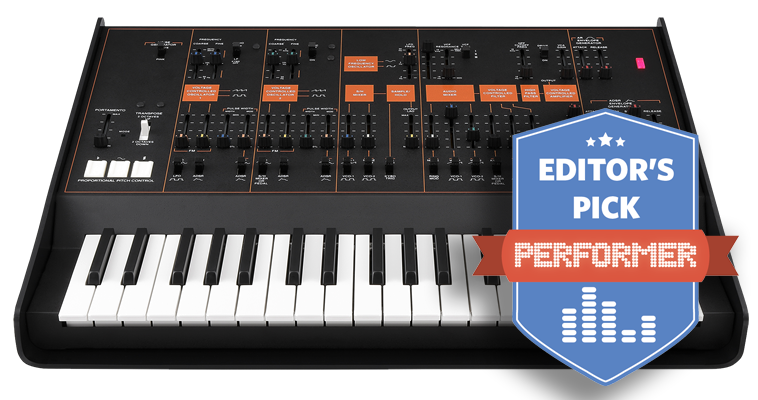The new ARP Odyssey duophonic synthesizer from KORG is quite simply the best re-issue on the market today.
RELATED:
- The Overall Best Synth Under $1000
- The Best Virtual Analog Synth Under $1000
- The Best Bottom-End Synth Under $1000
- The Most Versatile Synth Under $1000
WHY WE LOVE THE ARP ODYSSEY
For all its quirks, and for everything it did in the exact opposite fashion of the Minimoog, the ARP Odyssey became a classic synth of the 1970s because of that instantly recognizable sound (and let’s face it, it’s cool look). Some called it a “punk synth,” and others hailed its unique, wet funk bass sound (cough Herbie Hancock cough), but the Odyssey defies categorization and belongs in a class all its own. Where the Minimoog had knobs, the Odyssey had sliders. Where the Moog was monophonic, the Odyssey was duophonic. Where Moog had wheels, the Odyssey had pads. Where Moog designed its instruments to be easily accessible even to those new to synthesis, the Odyssey looked like a keyboard hooked up to a mixing console that you’d need an engineering degree to figure out — but the effort in learning the machine (especially the great re-issue we were able to play around with) pays off huge in the unlimited sounds you’re able to coax from its engine.
New arrival at the office. Time to play.
A photo posted by Performer Magazine (@performermagazine) on
Bringing it back over 40 years after its initial introduction, we were a bit skeptical as to what KORG’s re-issue (sometimes referred to as the KARP Odyssey) would have in store. But all worries were immediately alleviated once we sat down, plugged it in, and started playing. The sound is spot-on. Close your eyes and you’re there, back in time, it’s that damn accurate. Some things have changed, though, but all for the better. The entire casing is about 15% smaller, which is great because the original Odyssey never fit right on any desk I’ve ever used. You also have a new headphone jack, plus a selector switch for all three classic Odyssey filter revisions (an amazingly welcome feature). The keys are smaller, which might turn off some purists, but they’ve got a fast action, and there’s now a piece of casing underneath the keybed that wasn’t on the originals (a nice touch, because that lack of protection is precisely why you see so many of the old ones with broken keys).
We love almost every addition except one. MIDI implementation is pretty weak. You’ve got note on/note off and as far as we could tell (trust us, we dug around hoping this wasn’t the case), that’s it. So as a MIDI controller, it’s a bit of a dud. But really, that’s not why you’re buying it, is it? Nah, you want that Odyssey look (our re-issue is in the Rev 3 case, the classic orange/black combo) and sound without breaking the bank. And on that front, KORG delivers in a big, bad way. Color us impressed.
Arp Odyssey reissue by Korg – top view
WHY YOU SHOULD BUY THE ARP ODYSSEY REISSUE
If you want that classic ARP Odyssey sound (and can live with its quirks), but can’t stomach the prices the originals are fetching on the used market, KORG’s reissue is a dream come true. The sound is dead-on compared to the original, and its smaller form factor is actually a big check in the plus column.
PROS:
The ARP Odyssey reissue from KORG improves upon a classic in every way imaginable.
CONS:
MIDI implementation is pretty weak.
PRICE:
$799
Arp Odyssey reissue by Korg – rear panel
ARP ODYSSEY SPECS:
-Keyboard: 37-note (Slimkey, No velocity sensitivity, No aftertouch)
-Maximum Polyphony: 2 voices for duophonic; normally monophonic
-VCO Waveforms: Sawtooth, Square, Pulse (Dynamic Pulse)
-VCF (Voltage Controlled Filter) Types: Low pass (I: 12 dB/oct., II III: 24 dB/oct.)
What do you think of our review of the new ARP Odyssey duophonic synthesizer reissue from KORG? Let us know in the comments below or drop a line on the Performer Magazine Facebook page or on Twitter @Performermag. And be sure to read more from the special Synth Issue of Performer Magazine.
